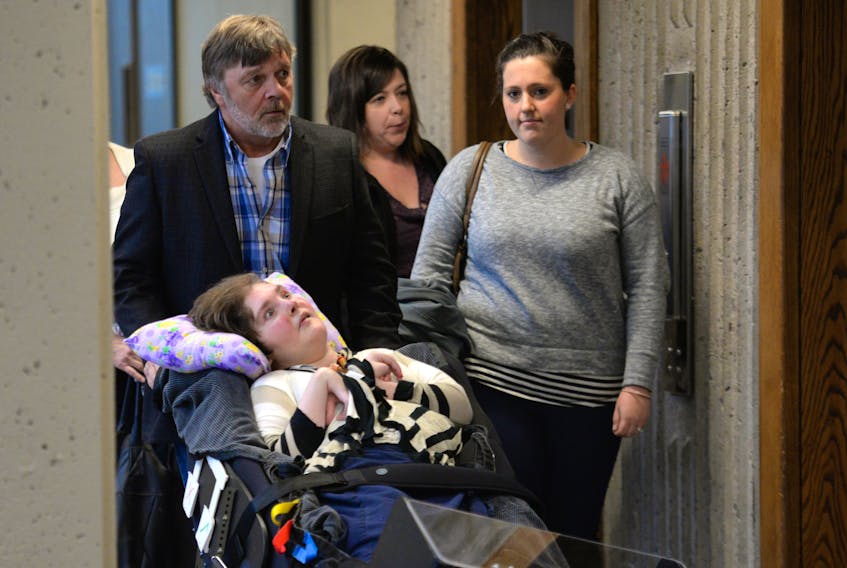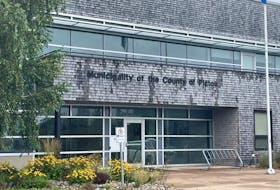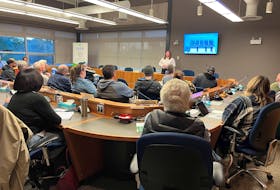WATERVILLE, NS – Joellan Huntley’s whole world is going to open up now.
Louise Misner says her daughter’s new eye-gaze software has let Joellan communicate with more than just yes or no responses for the first time since 1996, when she suffered a catastrophic brain injury in a car crash that left her paralyzed and unable to speak.
Misner spoke to reporters the morning of Jan. 2, 2018 at the Kings Regional Rehabilitation Centre in Waterville while Joellan lay nearby with the technology hooked up at her bed. Misner never doubted a day would come when she could communicate with her daughter.
“Yes. I never gave up. We never gave up, her father and I,” she said.
Finding the right fit
Misner announced Dec. 29 that Joellan had communicated with her beyond simple yes and no responses on Christmas Day for the first time since the crash.
Joellan, now 37, used icons on a computer screen to communicate with her mother about the type of shirt she was wearing, and Misner is sure her daughter will communicate more as she gets the hang of the technology.
“She knows now what she has to do,” Misner said.
“She’ll just keep getting better and better.”
Amy Smith, a speech language pathologist with Nova Scotia Hearing and Speech, collaborated with Diane Holmes, a speech language assistant at the rehabilitation centre, to find a system that worked for Joellan.
The work goes back many years, starting with using mirrors and pictures of her family to make sure she could track objects with her eyes and know what she was looking at.
They then moved to the basic eye-gaze system that involved selecting the words yes and no on a handmade item that offered each choice.
“To use an eye-gaze system like this, there has to be certain amount of comprehension of what you’re doing, and attention to be able to focus on the screen,” Smith said.
“All of that practise of focusing on pictures and the mirror and things like that led up to her success with this.”
‘Like learning a new language’
Smith and Holmes started assessing different systems before choosing the one Joellan now uses about a year ago. They have been working with her and staff since then.
“She’s to the point now that we can usually just set up the system, make sure her eyes are [calibrated] to the system, and she can go from there,” Smith said.
“She has the autonomy to say what she wants, instead of just communicating through yes or no answers.”
Joellan can currently choose from one of six icons on a screen, and has about 40 images and words she currently uses.
“It’s a vocabulary. This is like learning a new language for Joellan,” Smith said.
“It’s like learning any new language — you have to be immersed in it, you have to practise with it before you’re a proficient user.”
As they continue to use the system, they’ll look to add items to the menus that Joellan may want to talk about.
Holmes has been employed at the rehab centre for 16 years, working on Joellan’s unit before getting involved with speech therapy.
She said the progress over those years has been amazing.
“I’ve always known that Jo had something to say, and that she has a personality you wouldn’t believe. All she had was a smile and a scowl and she was able to get the entire world around her to communicate with her. There’s nobody who works with Jo that would tell you that she doesn’t have huge personality,” she said.
Breaking through after 21 years
And Joellan seems quite proud of her accomplishments.
“The breakthrough on Christmas was that they were able to do that on their own, and there were no professionals there to troubleshoot,” said Holmes.
Smith said the technology has been around for several years, but used for controlling a computer or environmental controls in someone’s home.
Huntley’s family won a $1 million insurance settlement as a result of Joellan’s crash, but by 2014 they found themselves embroiled in a court battle with the province’s Community Services Department which sought to claw back the money for past and future care costs.
An out-of-court settlement was reached in April 2015, after Joellan’s family argued they needed the money for care that included physiotherapy and special equipment that would add to her quality of life.









